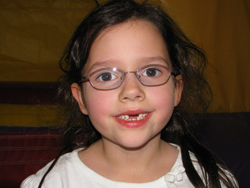A.B.A Therapy

A behavior-modification-type approach to learning based on the work of Dr. B.F Skinner. This approach is based on careful study (analysis) of each behavior; breaking down each behavior into even smaller behaviors (task analysis) and gradually teaching each small behavior one at a time, using rewards in very specific ways (shaping). While uniquely adapted to each child (individualized), this is a highly structured, rigorous, systematic and consistent (in all locations) teaching approach which is organized around:
- The specific way a request is made of the child (Antecedents)
- The child’s response to requests (Target Behaviors) and
- How adults react to the child’s correct/incorrect responses (Consequences)
This is achieved through play, which facilitates the transition from one situation to the next.
In, 1987 a UCLA project by Dr. Ivar Lovaas and associates. In this study 19 children were given 40 hours/week of one-on-one behavioral treatment for two years. The findings were as follows: 9 out of 19 (47%) children successfully completed regular first grade and obtained average or above average scores on IQ tests. 8 out of 19 (42%) successfully completed first grade in classes for language delayed or learning disabled children. They had made substantial gains in most areas but not enough to enable them to participate fully in a regular classroom setting. 2 out of 19 (11%) made little or no gain and were placed in classes for the severely autistic or mentally retarded. The follow up to the 1987 study in 1993 by McEachin and Smith indicated that 47% (9/19) were able to attain normal functioning in school at the age of 13.
ABA therapy program is one that early intensive (30+ hrs /wk) intervention greatly effects the outcome of the child and in some cases actually enables autistic individuals to function at a normal capacity when treatment is complete. Although most of these studies indicate the greatest gains are made the earlier the intervention is introduced (preferably before age 5), it has been demonstrated that children of all ages can make tremendous progress from an ABA type program. ABA is not a miracle cure for autism, but it is one of the best treatments that is currently available today to enable autistic individuals to reach their maximal potential."
Applied Behavioral Analysis (ABA) therapy, speech and language therapy, motor skills training, sensory integration therapy and play and socialization with peers. Individual children, depending on their developmental level and symptoms, will need different amounts of each of these approaches in their program. ABA therapy approaches are used in order to produce natural and spontaneous behaviors and language.
Please Note:
This site is provided as a service to our visitors. Any service or product provider lists are for reference only. FEAT neither endorses nor promotes any product or service listed. Verification of qualification and current license are the responsibility of persons seeking service.
© Copyright 2024 Families for Effective Autism Treatment
Site developed and maintained by Monkey Logic, Inc. Software for Autism












